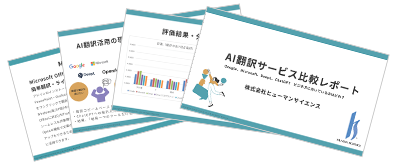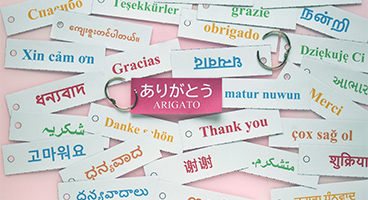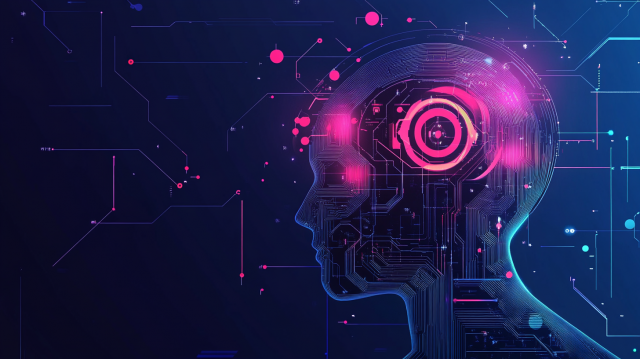
- Table of Contents
1. What is DeepL?

This blog post will give you a detailed explanation of DeepL.
What is DeepL?
DeepL is a machine translation service developed by DeepL SE, headquartered in Germany, in 2017. In 2020, Japanese was added to its list of supported languages, leading to its widespread use in Japan. The company also offers a web search service called "Linguee," which allows you to search for example sentences with the original text and its translation displayed side-by-side. DeepL has a reputation for providing natural and highly accurate translations compared to other machine translation services, as the data on which it was trained is such high quality.
Features of DeepL
DeepL utilizes cutting-edge AI technology to achieve the highest level of translation accuracy. Compared to other translation services, DeepL is especially capable of producing natural expressions that resemble those of a native speaker. This natural-sounding translation quality has made DeepL popular in various countries around the world, including Japan.
In 2020, the neural networks integrated into the DeepL Translator were significantly improved. As a result, it has become capable of expressing finer nuance compared to other translation services. Not to mention, its high translation accuracy has garnered an ever-growing reputation. And furthermore, translations utilizing their engine consider context, allowing for even more accurate and natural sentences.
DeepL offers two versions of their service: a free version and a paid version (DeepL Pro). The paid version includes features related to business and confidentiality, such as API integration and translation data protections. Therefore, it is capable of supporting not only individual users, but also companies and professional translators. For more details on how to implement it in your business, check out the blog linked below.
How to Implement DeepL Automatic Translation Services in Your Business
For more details on the differences between the free and paid versions of DeepL, see the following blog.
What's the Difference between DeepL's Free Version and Paid Version (DeepL Pro) – Pricing, Security, Character Count
The release of DeepL Write
DeepL Write is an AI-powered writing correction tool. It not only corrects grammar and punctuation mistakes, but also makes suggestions regarding expressions, tone, and style. Currently, it supports English (British and American) and German, with plans for additional language support in the future.
DeepL Write can be particularly useful in business and academic settings. If you're writing a paper or report in English or German, it can help you find more appropriate wording and expressions by referencing suggested phrases. It is also extremely valuable for those still learning English or German. By utilizing this tool during the learning process, users can deepen their understanding of English and German grammar and expressions, aiding the acquisition of these languages.

2. Future Trends in Machine Translation

The topics described below represent future trends in machine translation.
The demand for computer-aided tools is increasing globally
In recent years, as globalization has spread, communication with people from various countries and regions has become commonplace. Alongside this, the demand for machine translation to overcome language barriers has risen globally. Machine translation is technology that automatically performs translation tasks that were traditionally handled by humans. While hiring human translators to directly handle translation work has long been the norm, in today's world where information is rapidly disseminated, efficient translation methods are in demand. This is where machine translation powered by AI (artificial intelligence) comes into play.
Thanks to great advancements in AI technology, the accuracy of machine translation has improved, enabling users to achieve translations that are significantly more natural-sounding than their past counterparts. Furthermore, because the translation speed has also increased and the investment required for re-editing and corrections has lessened, this has led to the widespread use of machine translation in many companies and organizations. Machine translation is utilized not only for document translation, but in a wide range of fields such as business chats and negotiations, guidance in the tourism industry, the translation of academic papers, and more, thereby increasing its value even further.
In the future, the evolution of machine translation technology is expected to accelerate further, leading to higher quality translations. As AI technology in particular continues to evolve, more advanced translation techniques utilising neural networks and improvements in natural language processing are anticipated. As a result, translations that currently require specialized knowledge or a deep understanding of complex cultural backgrounds, which are still considered difficult to translate, much less automate, could become possible through machine translation.
Cloud-based online machine translation services are highly popular
Machine translation services are offered in various formats, including software packages, on-site servers, and cloud-based solutions. Among these, cloud-based online machine translation services are particularly popular.
One reason why these services are so popular is cost reduction. Traditional offline machine translation systems require the purchase and installation of expensive translation software and dedicated servers, but cloud-based services eliminate such costs. This allows small and mid-sized enterprises and independent business owners to access translation services at affordable prices.
Importantly, because cloud-based online machine translation services do not require dedicated servers, the load of performing machine translation is significantly reduced. This has the benefit of lowering capital investment and maintenance costs. Furthermore, since it is an online service, translation work can be performed anywhere with internet access, enabling a more flexible work style.
Beyond that, it's worth noting that cloud-based online machine translation services always utilize the latest translation technologies. The offline translation software that people used to rely on required updates every time a new version was released. However, with cloud-based services, providers automatically update the system, allowing users to always access the latest translation technologies without any effort on their part. In the future, we expect that cloud-based online machine translation services will continue to evolve further.
Neural machine translation is gaining notice
Neural machine translation is a type of machine translation that uses neural networks modeled after neural pathways in the human brain. It is characterized by its ability to generate translations that are more natural and easier to understand, compared to traditional machine translations. Neural networks learn based on the input data and output those results. By training on language data and context, the translations gain relevance in that context. This enables it to handle expressions and phrases that traditional machine translations struggled to address.
The reason neural machine translation is gaining so much attention is that it's expected to provide translations at a quality level that's similar to that of human translators. Older machine translation methods often resulted in grammatically correct but unnatural text, which made it difficult for readers to understand. However, fans believe that by utilizing neural machine translation such issues can be overcome.
Someday, people expect that advancements in neural machine translation technology will further improve the quality and speed of output, making it applicable in numerous situations. Neural machine translation will likely play an increasingly important role in our work and daily lives.
3. How Translations by ChatGPT Compare to DeepL

ChatGPT, a tech phenomenon experiencing global recognition, can also be used for translation purposes.
What is ChatGPT?
In recent years, AI (artificial intelligence) has rapidly evolved thanks to new technological innovations, and it has deeply permeated our daily lives. One of the fields where remarkable advancements have been made is conversational AI, among which ChatGPT developed by OpenAI is particularly well-known. OpenAI is a non-profit organization founded in 2015 by leading researchers and investors, including Elon Musk and Sam Altman, that's dedicated to the research and development of AI. It aims to ensure that AI can be used safely and broadly, pursuing benefits for people around the world.
The biggest feature of ChatGPT is its ability to hold natural, human-like conversations through advanced natural language processing technology, and it can do so in many different languages. Additionally, ChatGPT has the flexibility to generate appropriate responses to a variety of topics and questions, allowing users to obtain specific solutions and information related to their interests and inquiries.
ChatGPT is trained on vast amounts of data and has the ability to understand human language. This capability improves with each version, providing a richer conversational experience. Furthermore, this technology is being utilized across a wide range of fields and is expected to benefit areas such as chatbots, customer support, content creation, and education.
The functions that allow you to generate, translate, and summarize text are also very useful. You can automatically generate blog posts or email messages by specifying the content, translate text into foreign languages, or even create text in a foreign language from scratch. In addition, you can not only to translate foreign text into your native language but also summarize it.
Processing text with ChatGPT is easy. For example, if you want something translated, you simply enter the phrase, "Please translate the following sentence into [language]," and then add the passage that you want to translate. This command phrase is referred to as a "prompt." By changing the prompt, you can instruct ChatGPT to perform various tasks like answering questions, generating text, translating, and summarizing.
Comparing translations of ChatGPT and DeepL! What are the differences?
1. Operation Method
ChatGPT and DeepL have different operation methods. ChatGPT requires not only the text to be translated but also a prompt (instructions or command) in order to provide a translation. In contrast, DeepL can translate with just the target text, making it more intuitive to operate. Regarding user friendliness, the speed at which translation results are displayed also differs between the two. DeepL starts translating as soon as you begin entering the target text, enabling fast translations. ChatGPT, on the other hand, does not begin translating until the instructions are submitted, which may take a little longer.
2. Translation Options
DeepL displays one translation for each string of original text, but clicking on phrases within the translation presents alternate translation options. ChatGPT also provides one translation, but if you give it a follow-up prompt like, "Please provide another translation option for [phrase]," it will display an alternative. While ChatGPT can achieve the same functionality as DeepL through the use of prompts, the need to input those prompts adds more steps compared to DeepL.
3. Glossaries
DeepL has a glossary feature that allows you to register bilingual word pairs and thereby translate specific phrases with designated translations. Meanwhile, ChatGPT does not have such glossary features, but it does allow you to specify how you want specific phrases to be translated in the prompt. The downside here is that with ChatGPT you need to specify the set terms in the prompt each time you translate, which can be cumbersome and impractical.
4. Translation Accuracy
DeepL is characterized by fluent and natural translations, but there may be cases where information is omitted when translating long sentences, or entire sentences may be missing when translating multiple sentences. You must compare the the translated text to original text to ensure that nothing was left out. ChatGPT's translations tend to be more literal and word-for-word, but omissions are less common. Additionally, ChatGPT can perform functions other than straightforward translation; it can also refine translated text, expand on the content, or summarize it.
For more information regarding the translation accuracy of DeepL and ChatGPT, check out the following blogs.
How Accurate Are DeepL Translations? Comparison with Google and Microsoft for Business Emails
How Accurate Are Medical Translations by DeepL? Comparison with Google, Microsoft, and Amazon
Is ChatGPT a Good Translator? Thorough Verification at Each Stage of Translation
Free Download

4. Summary
This blog post explained trends in DeepL and other machine translations, and it compared the translation accuracy of DeepL and ChatGPT. While it is possible to use the now trendy ChatGPT for translation work, due to the nature of chat services, a back-and-forth through the chat interface is necessary. Instead, if you want to use machine translation, our current recommendation is to utilize services specifically designed for machine translation.
At Human Science, we offer the automatic translation software MTrans for Office, which can utilize.DeepL and ChatGPT.
Features of MTrans for Office
① Unlimited number of file translations and glossary integration for a fixed fee
② One-click translation from Office products!
③ Secure API connection
・For customers who want further security enhancement, we also offer SSO, IP restrictions, and so on.
④ Japanese language support by a Japanese company
・Response to security check sheets
・Payment by bank transfer available
(In Japan, DeepL only supports payment via credit card.)
Try out MTrans for Office with our 14-day free trial offer. Please contact us for more information.
MTrans for Office is an easy-to-use translation software for Office.


























